Table of Contents[Hide][Show]
- Nutrivore Score for Atlantic Herring – 996
- Atlantic Herring Nutrition Facts
- Atlantic Herring Nutrition Varies With Cooking and Processing
- Herring Nutrition Varies With Type
Health Benefits of Atlantic Herring Nutrients+−
- Atlantic Herring Provides 726% DV EPA+DHA
- Atlantic Herring Provides 655% DV Vitamin B12 (Cobalamin)
- Atlantic Herring Provides 76% DV Selenium
- Atlantic Herring Provides 20.7 g of Protein
- Atlantic Herring Provides 38% DV Vitamin B7 (Biotin)
- Atlantic Herring Provides 1.8 mg of CoQ10
- Atlantic Herring Provides 24% DV Vitamin D
- Atlantic Herring Provides 23% DV Iodine
- Atlantic Herring Provides 23% DV Vitamin B3 (Niacin)
- Atlantic Herring Provides 22% DV Phosphorus
- Atlantic Herring Provides 21% DV MUFA
- Atlantic Herring Provides 21% DV Vitamin B2 (Riboflavin)
- Atlantic Herring Provides 20% DV Vitamin B6 (Pyridoxine)
- How Much Atlantic Herring Should We Eat Per Day?
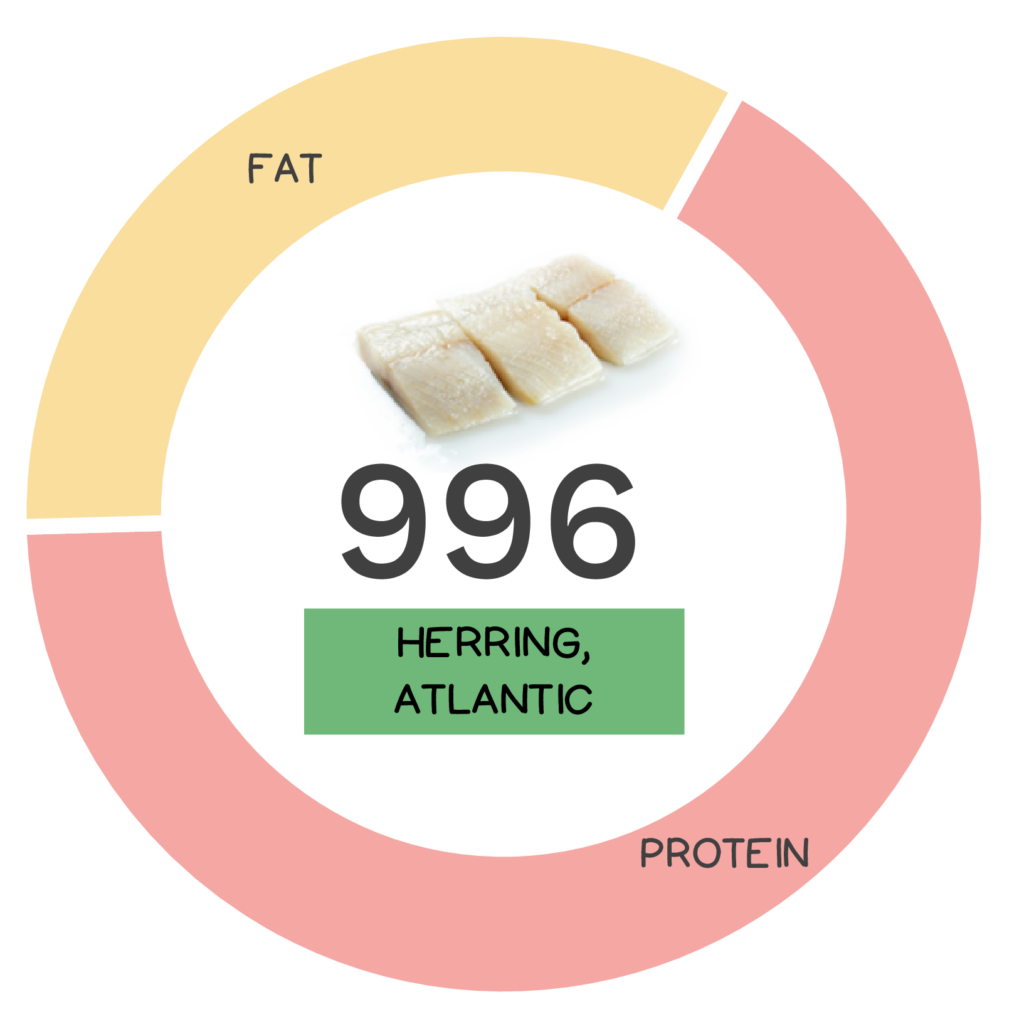
Although fresh and frozen fish can be expensive, herring is a nutrient-dense fish with some affordable options including pickled herring and smoked kippers. If you’re wondering what the heck a “kipper” is, keep reading to find out!
The term herring does not refer to one specific fish, but to a number of different species of oily fish.
Herring (also known as “silver darlings”) does not actually refer to one specific fish but to a number of different species of oily fish, for the most part members of the Clupeidae family of fish, which contains 200 similar species including sardines. Though there are many different species of herring, amazingly a mere 3 account for 90% of all captured herring! These include the Atlantic herring (comprising over half of the world’s fished supply), the Pacific herring and the Araucanian herring (found off the coast of Chile). Herring are known as prey fish (also forage or bait fish) meaning they are small open-water fish near the bottom of the food chain preyed upon by larger predators. To make up for their small size these fish travel in large schools (reaching up to 3 billion fish!), most often near the coast, in shallow, temperate waters of the North Atlantic (both sides), North Pacific, Baltic Sea and off the west coast of South America, though they are found in other parts of the world as well. Herring travel in a synchronized, grid-like pattern, separated by the distance corresponding to the jump length of their prey – a strategy which enables them to hunt effectively. They typically feed on the surface, at night, swimming with their mouths open to filter-feed.
The three species of herring accounting for 90% of all captured herring include: Atlantic herring (>50%), Pacific herring, and Araucanian herring.
These fish are small, quick-moving, bright-silver with a bluish or greenish back. They have a soft, single, spineless dorsal fin, small head, and protruding lower jaw, and vary in size from 5 to 18 inches (14 cm to 46 cm), weighing up to 1.5 pounds (700 grams) and living for up to 15 years. They are available all year-long since at least one stock of Atlantic herring spawns in every month of the year!
Historically, these fish have been a staple food since at least 3000 BC. Later, herring were important in the history of marine fisheries in Europe (responsible for the founding of several cities in the Middle Ages including Amsterdam, Copenhagen, and Yarmouth) and to the evolution of fisheries science. In fact, in Europe herring is regarded as the most commercially important fishery in history and as such herring are referred to as “silver of the sea”. They are also important as bait fish and for their oil used in nutritional supplements and for fishmeal used as animal feed. When it comes to eating this fish, herring are appreciated in cuisines all around the world, commonly enjoyed in numerous ways including broiled, dried, fermented, fried, grilled, pickled, raw, salted, smoked, and steamed. Even herring eggs are consumed in some cultures (Indigenous peoples collect them by placing cut hemlock boughs in the ocean before the herring arrive to spawn so that the fertilized eggs will stick to the branches for easy collection!). This is a food with a lot of cultural significance – salted herring is popular in Norway, fermented in Sweden, and dried in the Philippines, while pickled herring is big in Germany, Iceland, the Netherlands and Scandinavia. Kippers are a staple of British cuisine and refer to herring that has been split, gutted, and cold smoked, while bloaters (another British favorite) are whole and non-gutted herring. Smoking causes the herring flesh to turn red (true fact – that’s not a red herring!). And, in many countries pickled herring is a holiday tradition served at Christmas or New Year’s – move over turkey, this little fish is “off the hook”!
Learn What Foods to *ADD* to Your Diet
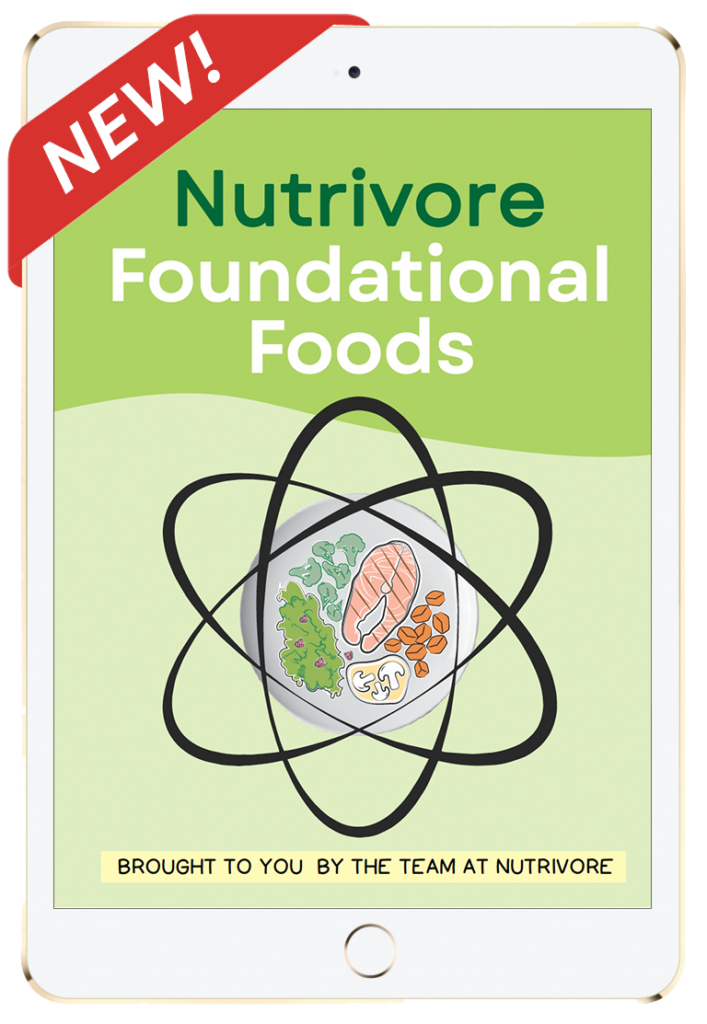
Nutrivore Foundational Foods
Learn what makes the 12 Nutrivore foundational food families nutritionally unique, their health benefits, which options are the most nutrient dense, how much of them to eat, plus various fun facts, practical pointers, and busting of common myths.
This very helpful resource will introduce you to new foods and expand your nutrition knowledge, making food choices easier!
Buy now for instant digital access.
Nutrivore Score for Atlantic Herring – 996
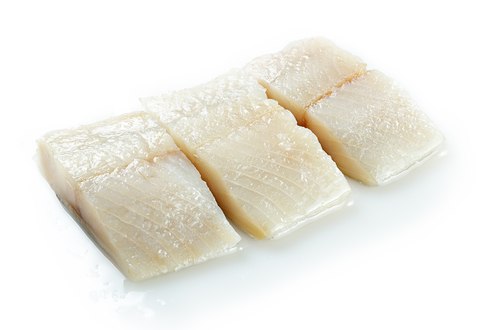
Atlantic herring has a Nutrivore Score of 996, making it a super nutrient-dense food! Plus, it is a low-carb food; Atlantic herring has 0 grams of net carbs per 115 gram serving.
Per serving, Atlantic herring is a best source (>50% daily value) of EPA+DHA, selenium, and vitamin B12 (cobalamin); an excellent source (20-50% daily value) of coQ10, iodine, monounsaturated fatty acids, phosphorus, protein, vitamin B2 (riboflavin), vitamin B3 (niacin), vitamin B6 (pyridoxine), vitamin B7 (biotin), and vitamin D; and a good source (10-20% daily value) of choline, copper, taurine, vitamin B5 (pantothenic acid), and zinc.
Ditch Diets. Embrace Nutrients. Start with this FREE Guide.
Sign up for the free Nutrivore Newsletter, your weekly, science-backed guide to improving health through nutrient-rich foods — without dieting harder —and get the Beginner’s Guide to Nutrivore delivered straight to your inbox!

Atlantic Herring Nutrition Facts
One serving of Atlantic herring is standardized to 115 grams (4 ounces). For reference, a typical fillet of Atlantic herring is 184 grams, which is more than 1.5 servings! When you cook Atlantic herring, it reduces in volume by approximately 20%: 100 grams of raw Atlantic herring is roughly equivalent to 78 grams of cooked Atlantic herring.
Atlantic Herring Nutrition Facts Per Serving
| Atlantic herring, raw | Nutrivore Score: 996 | Nutrient Density: Super! |
|---|---|---|
| Serving Size: 4 ounces (115 grams) | Protein: 20.7 grams | Net Carbohydrates: 0.0 grams |
| Calories: 182 | Total Fat: 10.4 grams | Dietary Fiber: 0.0 grams |

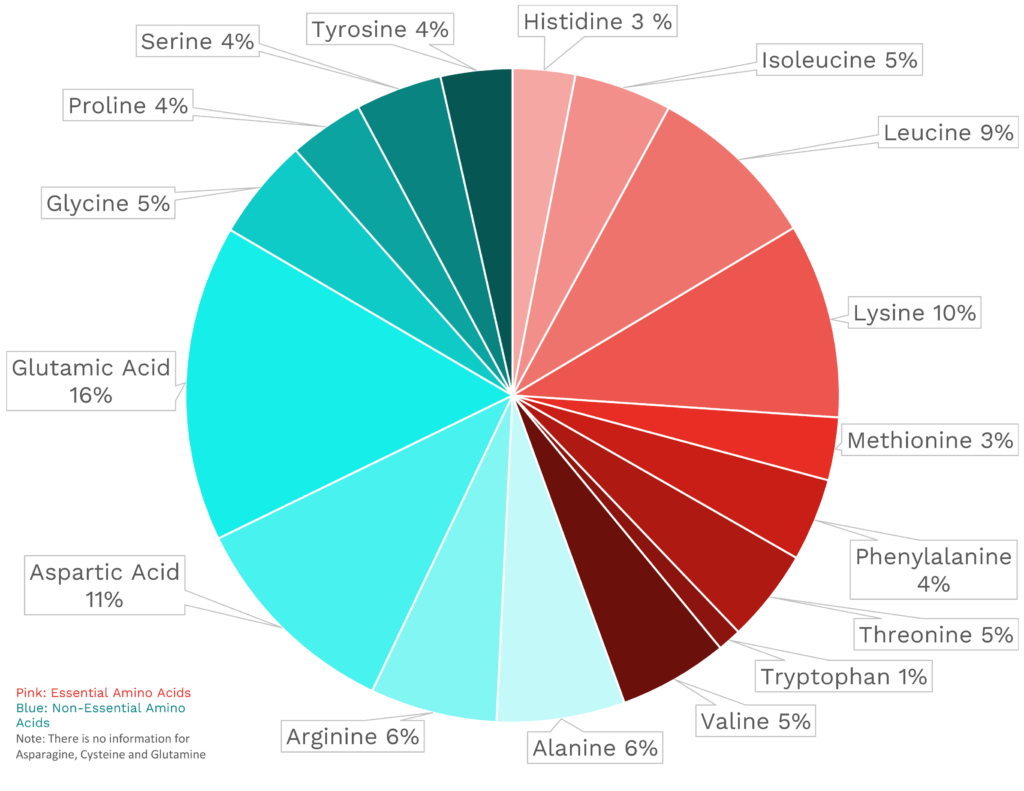
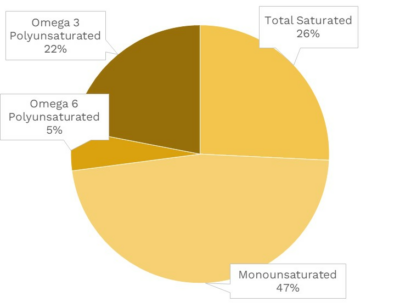
| VITAMINS | ||
|---|---|---|
| Vitamin A | 32.2 μg RAE | 4% DV |
| Vitamin B1 (Thiamin) | 105.8 μg | 9% DV |
| Vitamin B2 (Riboflavin) | 268.0 μg | 21% DV |
| Vitamin B3 (Niacin) | 3.7 mg | 23% DV |
| Vitamin B5 (Pantothenic Acid) | 0.7 mg | 15% DV |
| Vitamin B6 (Pyridoxine) | 347.3 μg | 20% DV |
| Vitamin B7 (Biotin) | 11.5 μg | 38% DV |
| Vitamin B9 (Folate) | 11.5 μg | 3% DV |
| Vitamin B12 (Cobalamin) | 15.7 μg | 655% DV |
| Vitamin C | 0.8 mg | 1% DV |
| Vitamin D (D2 + D3) | 4.8 μg | 24% DV |
| Vitamin E | 1.2 mg | 8% DV |
| Vitamin K | 0.1 μg | 0% DV |
| Choline | 74.8 mg | 14% DV |
| Myo-Inositol | 23.0 mg | ~ |
| CoQ10 | 1.8 mg | ~ |
| FUNCTIONAL FATS | ||
|---|---|---|
| MUFA | 4.3 g | 21% DV |
| ALA | 118.5 mg | 7% DV |
| EPA + DHA | 1806.7 mg | 723% DV |
| CLA | 3.1 mg | ~ |
| Linoleic Acid | 0.1 g | 1% DV |
| MCT’s | 0.0 g | ~ |
| MINERALS | ||
|---|---|---|
| Calcium | 65.6 mg | 5% DV |
| Copper | 105.8 μg | 12% DV |
| Iodine | 35.0 μg | 23% DV |
| Iron | 1.3 mg | 7% DV |
| Magnesium | 36.8 mg | 9% DV |
| Manganese | 40.3 μg | 2% DV |
| Phosphorus | 271.4 mg | 22% DV |
| Potassium | 376.1 mg | 8% DV |
| Selenium | 42.0 μg | 76% DV |
| Sodium | 103.5 mg | 5% DV |
| Zinc | 1.1 mg | 10% DV |
| PHYTONUTRIENTS | ||
|---|---|---|
| Carotenoids | 0.0 μg | ~ |
| Polyphenols | 0.0 mg | ~ |
| Phytosterols | 0.0 mg | ~ |
| Glucosinolates | ~ | ~ |
| Thiosulfinates | ~ | ~ |
| Betalains | ~ | ~ |
| AMINO ACIDS & PEPTIDES | ||
|---|---|---|
| Taurine | 69.0 mg | ~ |
| Ergothioneine | ~ | ~ |
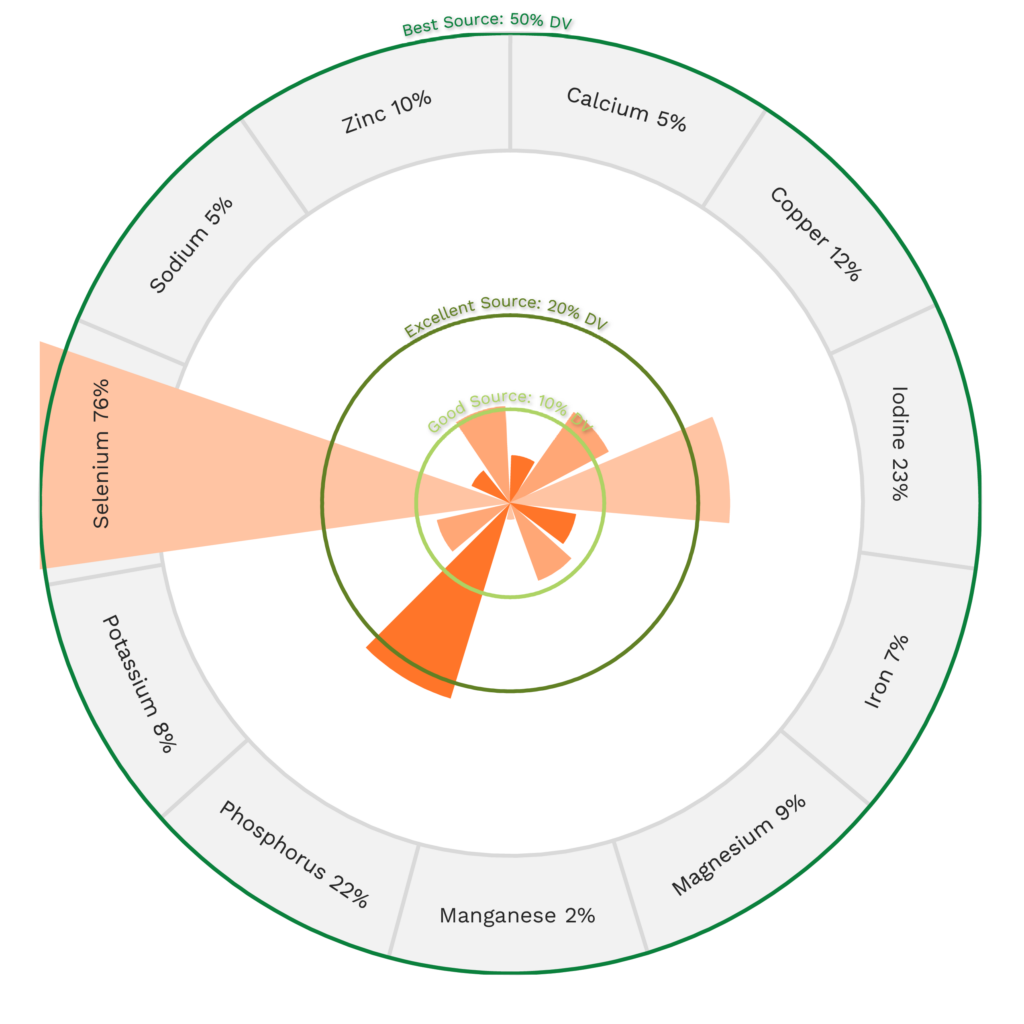
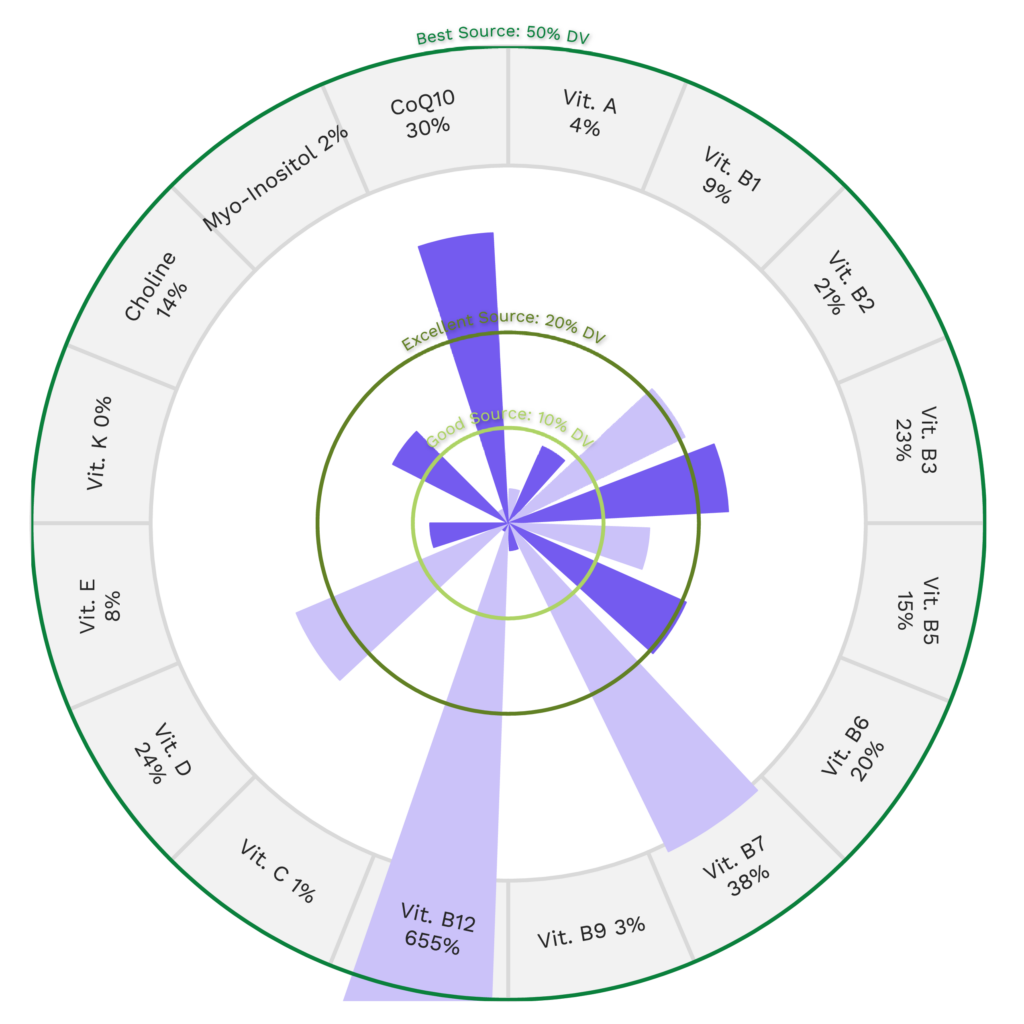
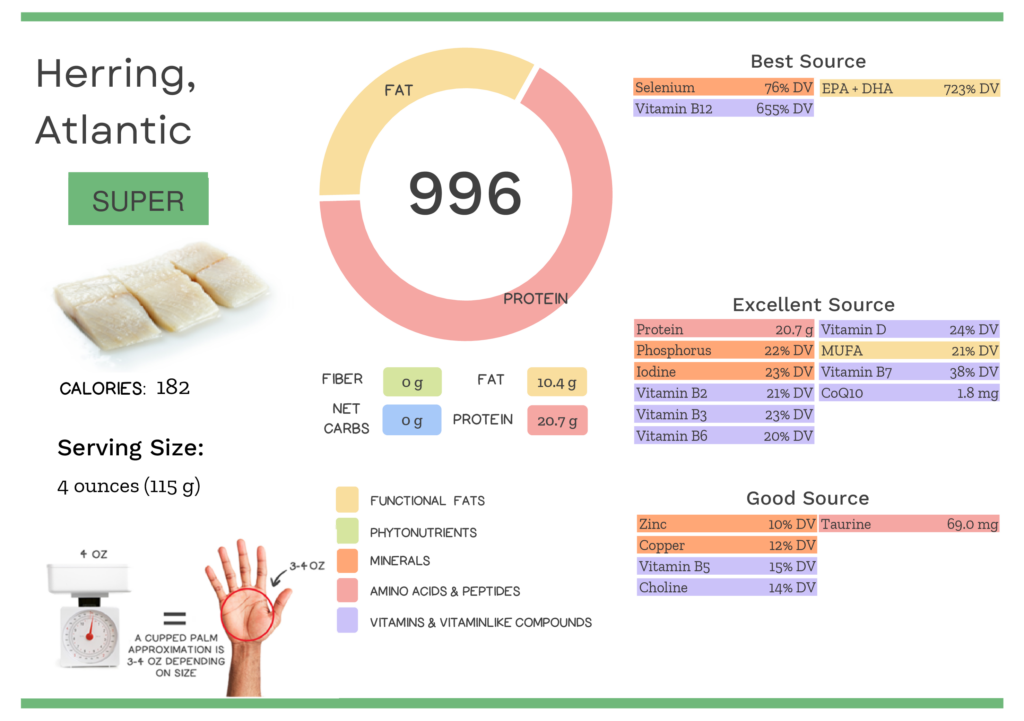

Quality Meat and Seafood
- 100% grass fed and finished beef, pasture-raised pork, pasture-raised chicken and wild-caught seafood
- Raised on regenerative family farms in the USA
- Fast delivery from our farms to your door
- Save 20% off for life, plus $15 off your first box, no coupon required
Atlantic Herring Nutrition Varies With Cooking and Processing
The Nutrivore Score of Atlantic herring varies depending on the way in which it was raised (farmed or wild-caught); typically wild-caught fish have higher levels of nutrients which results in higher Nutrivore Scores. The Nutrivore Score of this fish will also vary based on the method of preparation. Apart from fresh and frozen herring, this fish is conveniently available in affordable options such as pickled or kippered. No matter how you enjoy it, farmed, fermented, fresh, kippered, pickled, smoked, or wild-caught, including herring in our diet is a health-promoting choice.
| NUTRIVORE SCORE | |
|---|---|
| Atlantic herring, cooked, dry heat | 901 |
| Atlantic herring, kippered | 950 |
| Atlantic herring, pickled | 416 |
| Atlantic herring, raw | 996 |
Herring Nutrition Varies With Type
There are many different species of herring, each with their own unique taste and nutrient profile, which means their Nutrivore Scores also vary. Amazingly a mere 3 species account for 90% of all captured herring! The most popular is Atlantic herring, which comprises over half of the world’s fished supplies. The other 2 commonly fished species of herring include Pacific herring and the Araucanian herring, which is found off the coast of Chile. To maximize all the benefits herring has to offer, try incorporating different types into your diet, if you get the chance.
| NUTRIVORE SCORE | |
|---|---|
| Atlantic herring, raw | 996 |
| Pacific herring, raw | 755 |
Impressed by all the bene-FISH-ial nutrition in herring? Maybe your friends will be too!
Health Benefits of Atlantic Herring Nutrients
Let’s take a closer look at all of the best and excellent source of nutrients found in a 4-ounce serving of Atlantic herring and see how they benefit our health.
Atlantic herring is a concentrated source of numerous nutrients!
Atlantic Herring Provides 726% DV EPA+DHA
Atlantic herring is a phenomenal source of EPA+DHA, providing an astounding 726% of the daily value per 4-ounce serving!
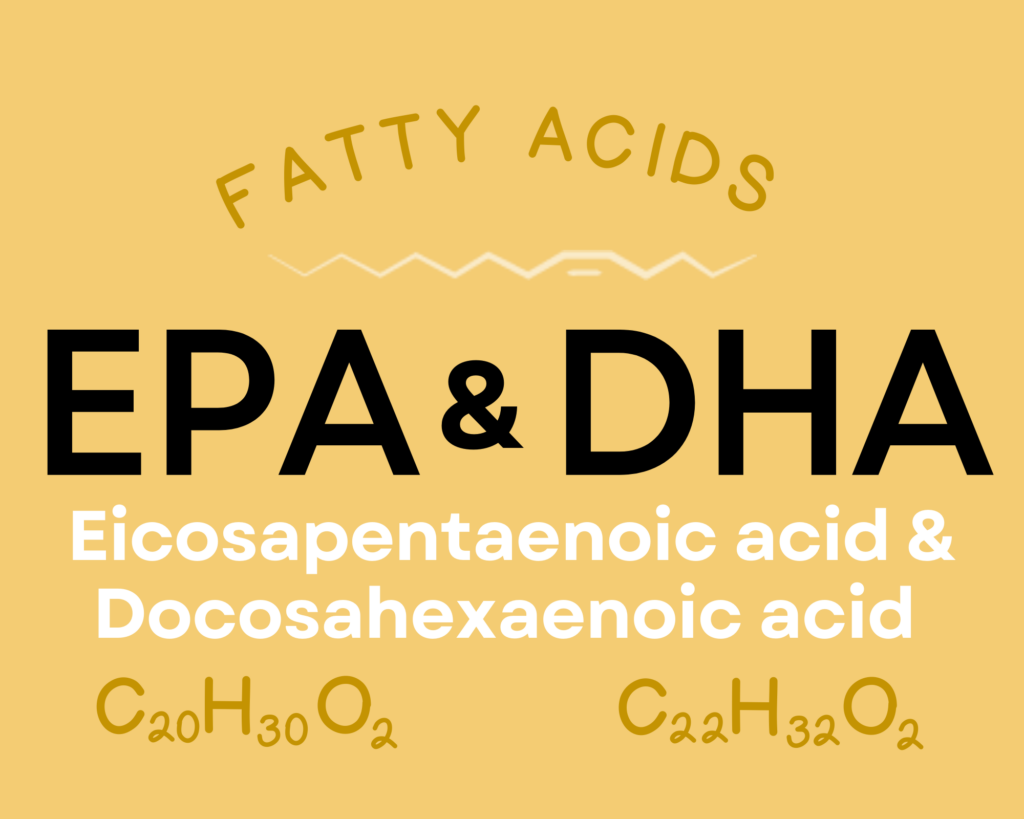
Eicosapentaenoic acid (EPA) and docosahexaenoic acid (DHA) are long-chain omega-3 fats that play important roles in neurological health, immune function, eye health and vision, inflammation, pain signaling, gut health, fetal development, and some aspects of cardiovascular health (like triglyceride levels and blood clotting). They exert many of their effects by helping form chemical messengers called prostaglandins, thromboxanes, and leukotrienes. EPA and DHA also serve as a structural component of the cell membrane, influencing important properties such as membrane fluidity and permeability. Small amounts of them can be synthesized from a shorter-chain omega-3 fat, alpha-linolenic acid (ALA). Learn more about EPA and DHA here.
Atlantic Herring Provides 655% DV Vitamin B12 (Cobalamin)
Atlantic herring is an outstanding source of vitamin B12 (cobalamin), providing an epic 655% of the daily value per 4-ounce serving!
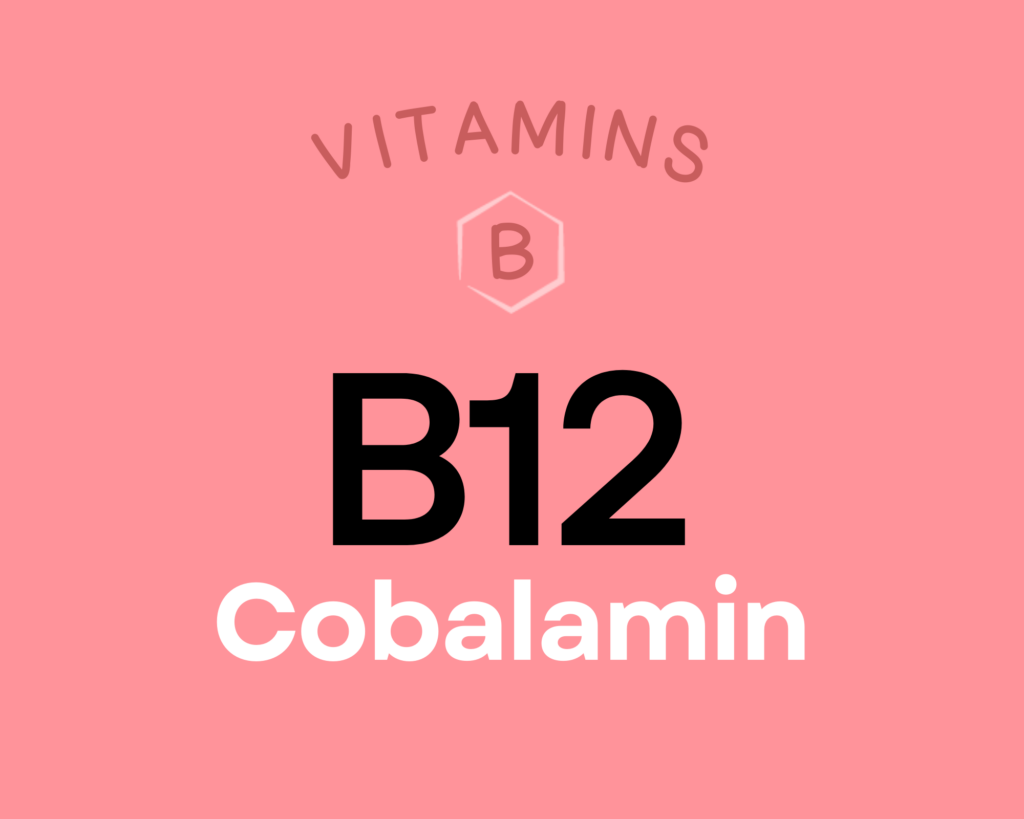
Vitamin B12 (cobalamin) is a water-soluble vitamin that serves as a cofactor for enzymes involved in energy metabolism, red blood cell production, DNA synthesis, neurotransmitter production, nervous system health, and folate metabolism. As a result of these roles, vitamin B12 is vital for maintaining brain and nervous system health, and may have a protective effect against dementia, Alzheimer’s disease, and depression. There’s also some evidence vitamin B12 may be cancer-protective, possibly through supporting folate metabolism (which then assists in repairing DNA damage). Learn more about vitamin B12 here.
Atlantic Herring Provides 76% DV Selenium
This fish is a best source of selenium, providing 76% of the daily value per 4-ounce serving!
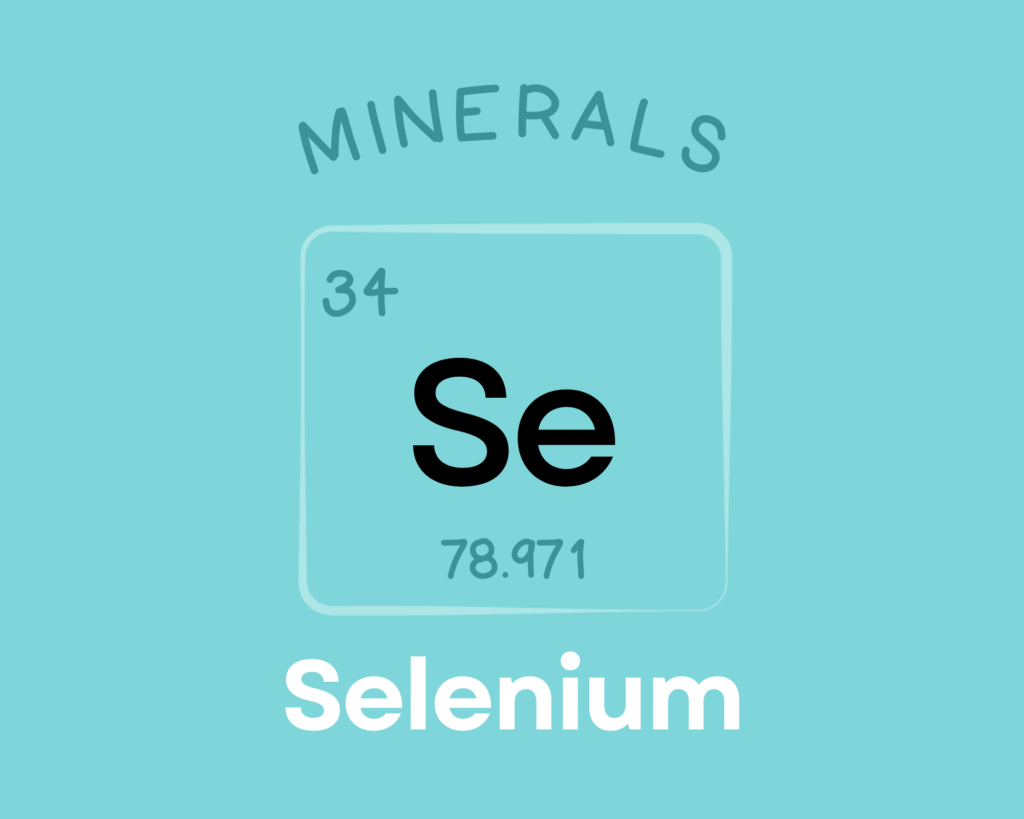
Selenium is a trace mineral needed by all mammals to sustain life. It serves as a component of the non-proteinogenic amino acids selenocysteine and selenomethionine, and also helps form over two dozen selenoproteins involved in reproduction, thyroid hormone metabolism, antioxidant defense, DNA synthesis, and immunity. Observational research suggests selenium could play a protective role against cancer, heart disease, asthma, and inflammatory bowel disease, although human trials have generally been lacking or contradictory. There’s also evidence that selenium can play a preventative role in asthma and inflammatory bowel disease, while also reducing mortality in patients with sepsis. Learn more about selenium here.
Atlantic Herring Provides 20.7 g of Protein
Atlantic herring is an excellent source of protein, containing 20.7 grams of protein per 4-ounce serving!
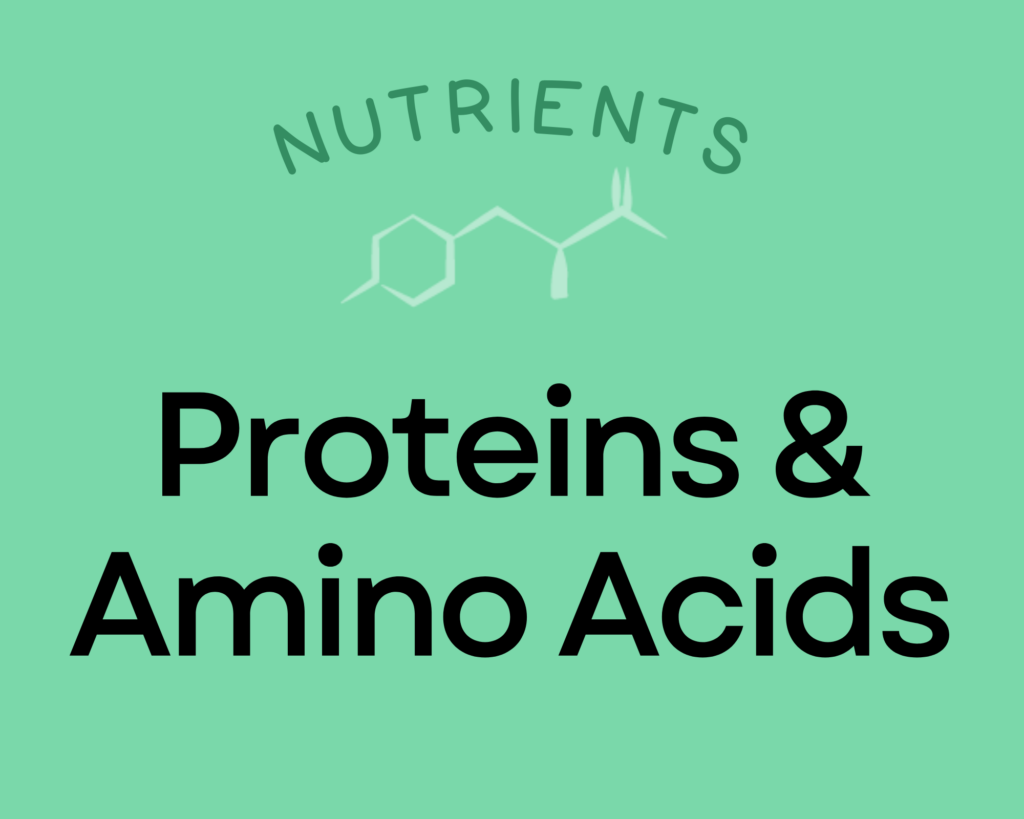
Proteins are the molecules that actually perform most of the various functions of life. In addition to being major structural components of cells and tissues, they have incredibly diverse roles from driving chemical reactions (e.g., enzymes) to signaling (e.g., some types of hormones) to transporting and storing nutrients. Dietary protein is necessary to supply the amino acid building blocks for all of the proteins in our bodies. The recommended daily allowance of protein is 0.36 grams per pound body weight (0.8 grams per kilogram of body weight). That amounts to 56 grams for a 150-pound person. However, it’s important to emphasize that this number is considered a minimum daily allotment, and there is no established upper limit. In fact, many studies have evaluated diets containing three to four times more protein than this minimum and proven benefits to weight management, body composition, hormone regulation, and cardiovascular health. These studies suggest that an optimal protein intake for most people is probably in the range of 1.2 to 1.8 grams per kilogram bodyweight (82 to 122 grams for that same 150-pound person), and that people who are very active may see the best results at even higher intake. Learn more about protein and amino acids here.
Atlantic Herring Provides 38% DV Vitamin B7 (Biotin)
Atlantic herring is also rich in vitamin B7 (biotin), providing 38% of the daily value per 4-ounce serving!
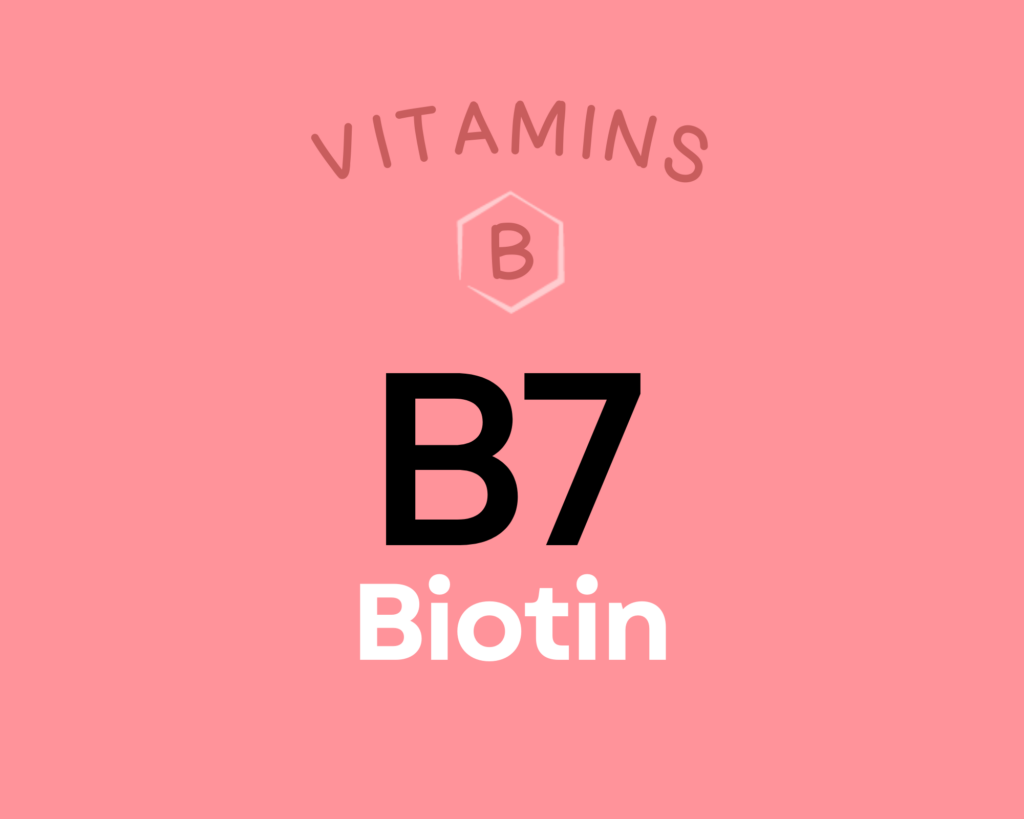
Biotin is a water-soluble B vitamin, also known as vitamin B7. Like other B vitamins, it plays an important role in energy metabolism (serving as a coenzyme for five carboxylase enzymes), neurotransmitter production, cellular function, and the function of various organs. Getting enough biotin can help support healthy nail and hair growth. It’s also particularly important during pregnancy, with low intakes increasing the risk of premature delivery and birth defects. There’s even some evidence biotin can benefit diabetics and reduce functional disabilities in people with multiple sclerosis. Learn more about biotin here.
Atlantic Herring Provides 1.8 mg of CoQ10
Atlantic herring is high in coQ10, providing 1.8 mg of coQ10 per 4-ounce serving!
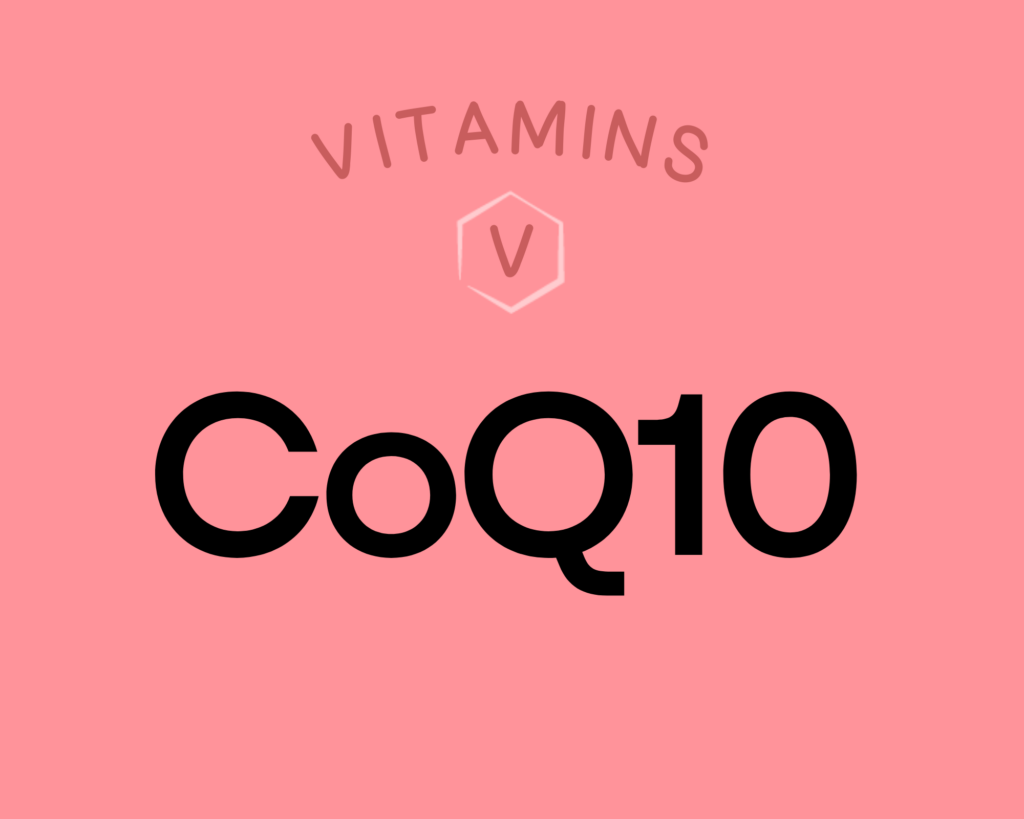
Ubiquinone is the oxidized form and ubiquinol is the reduced, more bioavailable form of the vitaminlike compound coenzyme Q10 (coQ10). CoQ10 is a potent antioxidant and a cofactor in the electron transport chain for the production of ATP. It may be helpful in treating or preventing heart and blood vessel conditions, diabetes, gum disease, muscular dystrophy, chronic fatigue syndrome, and breast cancer. Sources include beef, pork, mackerel, yellowtail fish, and chicken; it’s also found in smaller amounts in vegetables like broccoli and herbs like parsley. Learn more about coQ10 here.
Atlantic Herring Provides 24% DV Vitamin D
Atlantic herring is one of the few natural food sources of vitamin D, providing 24% of the daily value per 4-ounce serving!
Oily fish (including herring) are amongst the few food sources that naturally contain vitamin D.

Rather than being a “true” vitamin, vitamin D is a group of fat-soluble steroid hormones that can be either obtained from the diet or synthesized from sun exposure. It plays a major role in cellular differentiation, immune function, endocrine health, cardiovascular health, and even the intestinal absorption of several other nutrients (namely calcium, magnesium, and phosphorus). As a result of these diverse functions, getting enough vitamin D is important for protecting against chronic disease (including diabetes, cancer, and degenerative neurological conditions), maintaining good gut health, and keeping a healthy immune system (including protecting against both infectious disease and autoimmunity). Learn more about vitamin D here.
Atlantic Herring Provides 23% DV Iodine
Atlantic herring is an excellent source of iodine, providing 23% of the daily value per 4-ounce serving!

Iodine is a trace mineral that serves as a structural component of thyroid hormones, giving it a major role in thyroid health and function. As a result, it’s involved in regulating metabolism, reproductive function, fatty acid release, carbohydrate absorption, growth, and development. Consuming adequate amounts is particularly important during pregnancy (for preventing complications like preeclampsia, preterm delivery, miscarriage, and stillbirth) and during childhood (where it supports central nervous system development). Untreated iodine deficiency can lead to goiter and hypothyroidism. Learn more about iodine here.
Atlantic Herring Provides 23% DV Vitamin B3 (Niacin)
This fish is also an excellent source of vitamin B3 (niacin), providing 23% of the daily value per 4-ounce serving!
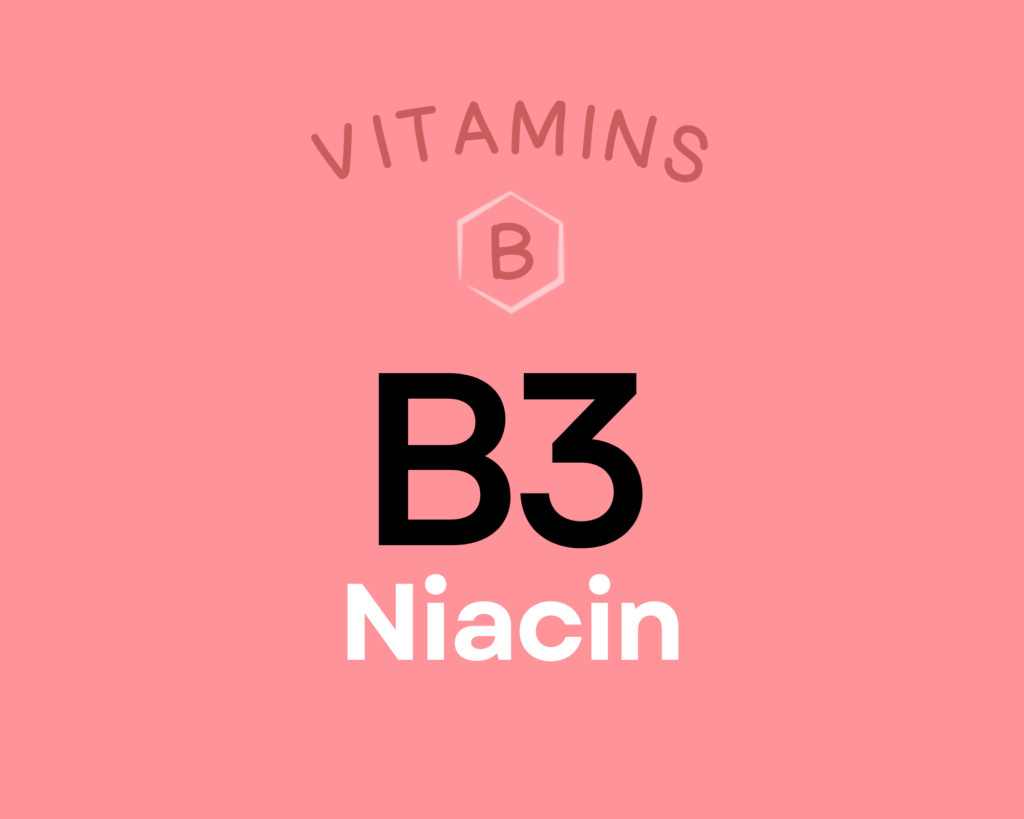
Niacin is a water-soluble B complex vitamin (vitamin B3) that’s needed to produce two very important coenzymes: nicotinamide adenine dinucleotide (NAD) and nicotinamide adenine dinucleotide phosphate (NADP). NAD and NADP are needed for over 400 enzymes involved in DNA repair, fatty acid synthesis, antioxidant systems, detoxification, and hormone synthesis, as well as the breakdown of fat, carbohydrate, protein, and alcohol. Niacin has therapeutic potential for cardiovascular disease and hyperlipidemia, and may also be protective against cancer and type 1 diabetes. Some research suggests it could benefit health outcomes for patients with HIV or schizophrenia as well. Learn more about niacin here.
Atlantic Herring Provides 22% DV Phosphorus
Atlantic herring contains a significant amount of phosphorus, providing 22% of the daily value per 4-ounce serving!
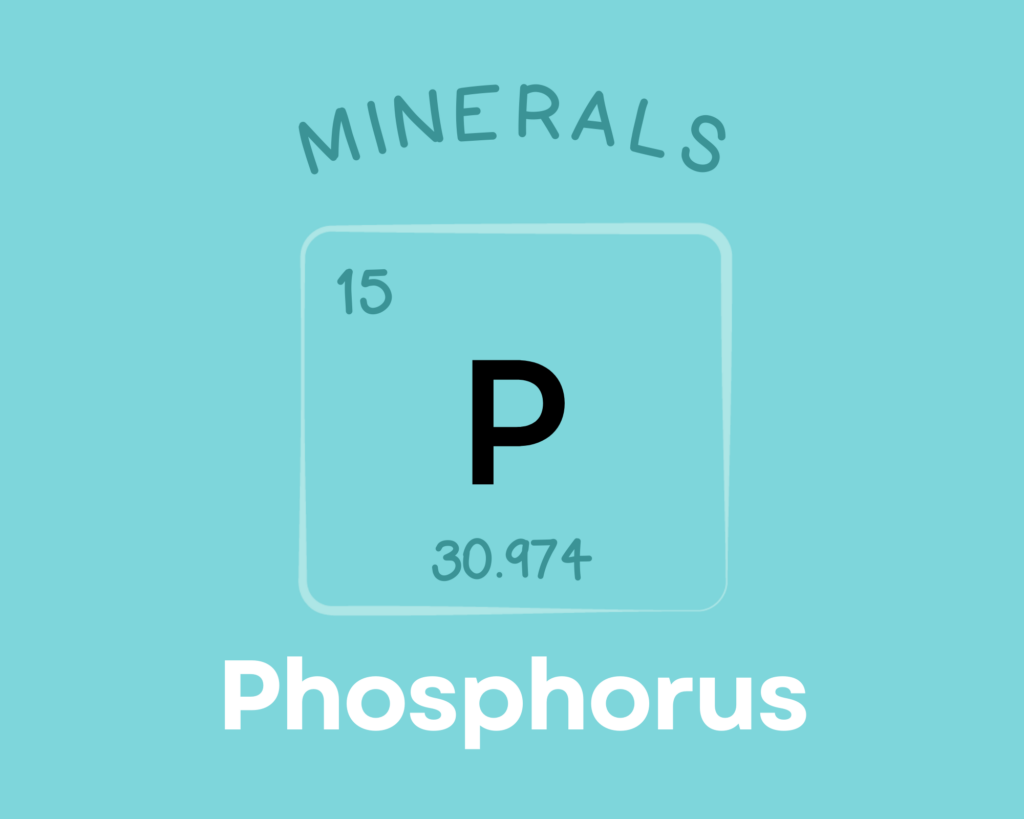
Phosphorus is an essential mineral that makes up about 1% of the total weight of the human body. Along with serving an important structural role for building nucleic acids and cell membranes, phosphorus is involved in numerous biological processes—including acid-base regulation, energy production, cell signaling, and bone mineralization. Excess phosphorus has been linked to a higher risk of cardiovascular disease, fractures, and osteoporosis, especially in the context of a low-calcium diet. Learn more about phosphorus here.
Atlantic Herring Provides 21% DV MUFA
This fish is also rich in monounsaturated fatty acids (MUFA), providing 21% of the daily value per 4-ounce serving!
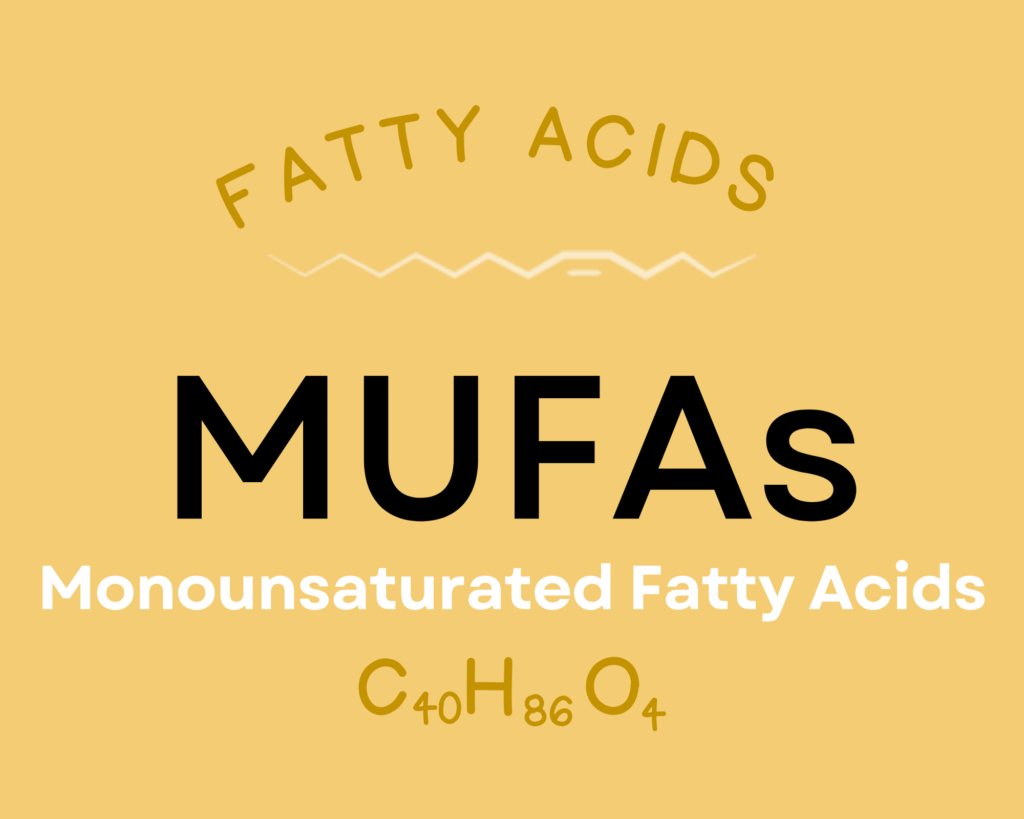
Monounsaturated fatty acids (MUFA), the most abundant of which is oleic acid, play an important role in cellular function due to its presence in phospholipids in cell membranes. Oleic acid is beneficial for cardiovascular health—both in reducing risk factors like high blood pressure, cholesterol, triglycerides, inflammation, and oxidative stress, and in reducing actual cardiovascular disease incidence and events. Oleic acid has even demonstrated anti-cancer activity, with an ability to inhibit the progression, proliferation, and metastasis of several types of cancer cells. Research shows this fat could benefit body weight regulation and obesity through its effects on energy metabolism and lipogenesis. In fact, human trials show that enriching diets with oleic acid leads to decreases in central obesity, abdominal fat, body weight, and food intake, while also possibly increasing energy expenditure! Oleic acid also possesses some benefits for diabetics—influencing genes and pathways involved in insulin signaling and glucose metabolism, as well as helping protect against some complications of diabetes, like diabetic retinopathy and atherosclerosis. Learn more about oleic acid here.
Atlantic Herring Provides 21% DV Vitamin B2 (Riboflavin)
Additionally, Atlantic herring is a great source of vitamin B2 (riboflavin), providing 21% of the daily value per 4-ounce serving!
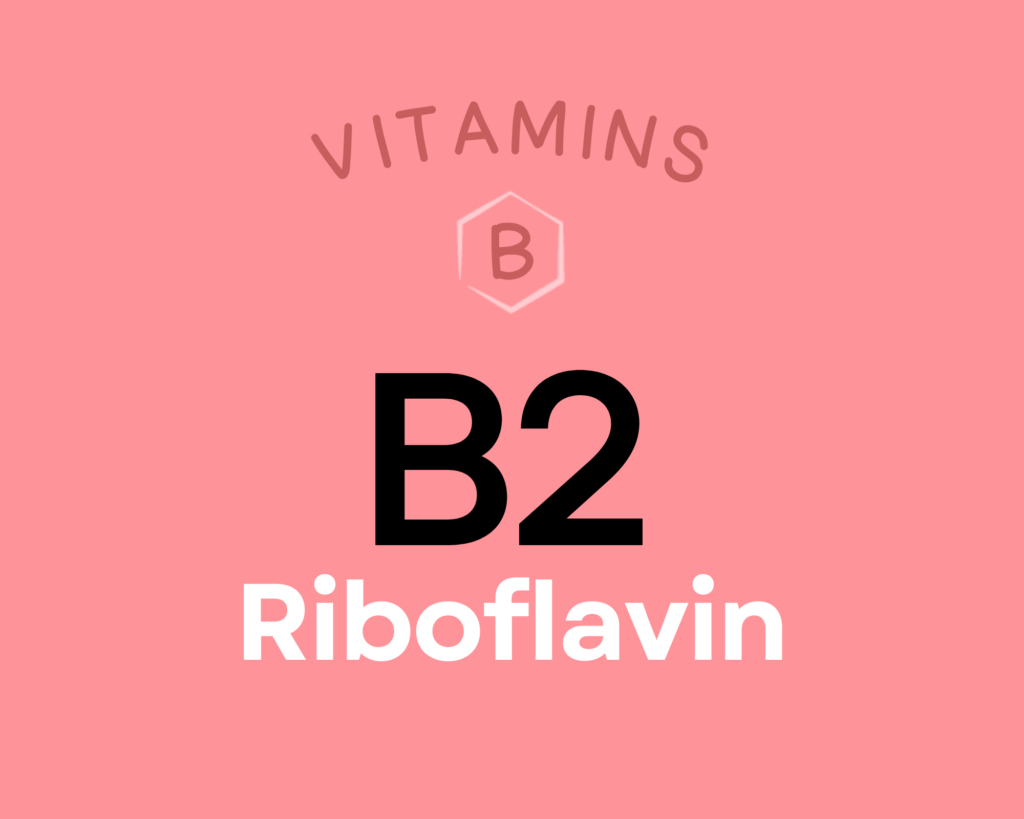
Riboflavin (or vitamin B2) is a vitamin that helps form two important coenzymes involved in oxidation-reduction reactions: flavin mononucleotide (FMN), and flavin adenine dinucleotide (FAD). Collectively, these coenzymes are involved in antibody production, energy production, growth and development, skin and hair health, and the metabolism of several other nutrients (vitamin B6, niacin, folate, and iron). Research suggests a role for riboflavin in preventing or treating migraine headaches, cardiovascular disease, cataracts, and preeclampsia during pregnancy. It also possesses some anti-cancer properties due to its involvement in folate metabolism and MTHFR activity. Learn more about vitamin B2 here.
Atlantic Herring Provides 20% DV Vitamin B6 (Pyridoxine)
Atlantic herring is also an excellent source of vitamin B6 (pyridoxine), providing 20% of the daily value per 4-ounce serving!
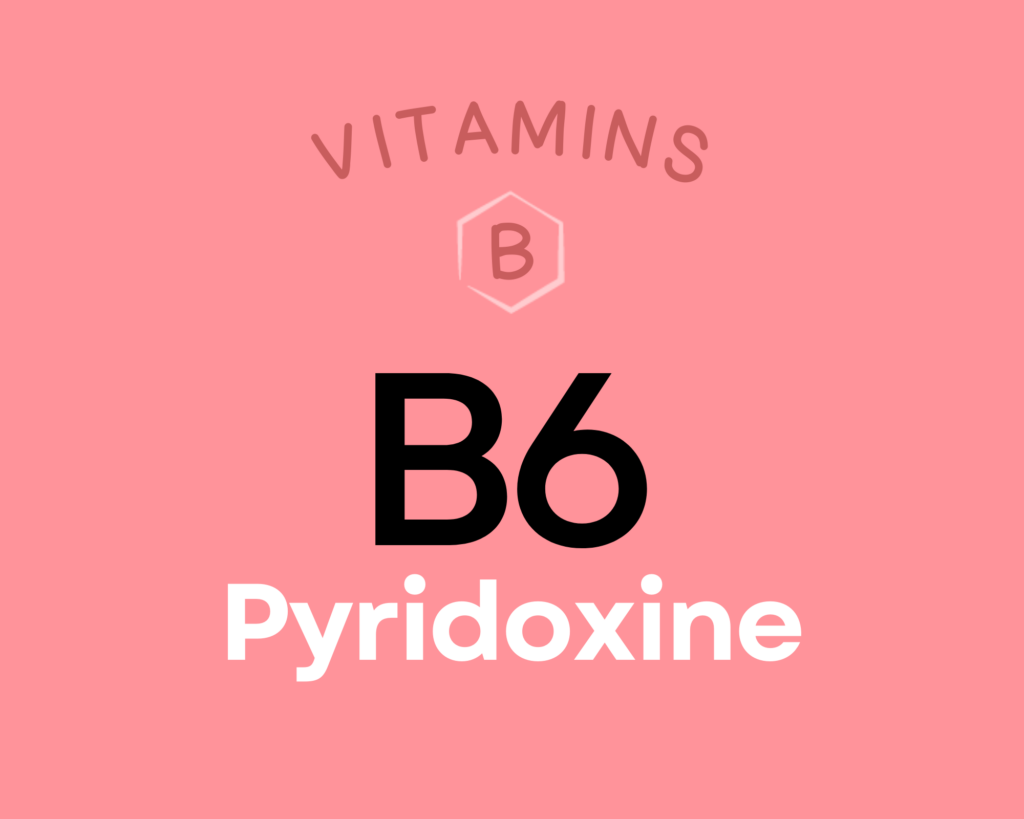
Vitamin B6 (pyridoxine) is a group of six water-soluble compounds with a similar chemical structure, all of which can be converted into their active form of pyridoxal 5’-phospate (PLP). Over 100 different enzymes require vitamin B6 in order to carry out their various functions in protein metabolism, fatty acid metabolism, neurotransmitter production, gluconeogenesis, hemoglobin synthesis, the release of glucose from glycogen, and energy metabolism (particularly the production of ATP in the Krebs cycle). Research suggests vitamin B6 may help protect against cardiovascular disease and certain cancers, could reduce the risk of depression among the elderly, and even reduce symptoms of morning sickness and PMS. Learn more about vitamin B6 here.
Learn What Foods Are the Best Sources of Every Nutrient

The Top 25 Foods for Every Nutrient
The Top 25 Foods for Every Nutrient e-book is a well-organized, easy-to-use, grocery store-friendly guide to help you choose foods that fit your needs of 43 important nutrients while creating a balanced nutrient-dense diet.
Get two “Top 25” food lists for each nutrient, plus you’ll find RDA charts for everyone, informative visuals, fun facts, serving sizes and the 58 foods that are Nutrient Super Stars!
Buy now for instant digital access.
How Much Atlantic Herring Should We Eat Per Day?
Fish are nutrient-dense sources of highly-digestible complete protein and outstanding sources of important nutrients in which we are commonly deficient. Let’s just say this seafood is “off the hook!” (Pun intended.)
Fish and shellfish are not only nutrient-dense sources of highly-digestible gut-friendly complete protein and the best food sources of the very important long-chain omega-3 fatty acids, DHA and EPA, but they’re outstanding sources of important nutrients in which we are commonly deficient. Eating seafood reduces risk of cardiovascular disease, type 2 diabetes, obesity and some forms of cancer.
Fish is a great source of vitamins B1, B2, B3, B6, B9, B12 and E, zinc, phosphorus, magnesium, iron, copper, potassium and selenium, with oily cold-water fish also providing substantial amounts of vitamin A and vitamin D. Fish with bones remaining, such as canned salmon and sardines, are the best dietary sources of calcium in the food supply. And marine fish are an excellent dietary source of iodine.
In fact, every 100 grams per day of seafood decreases all-cause mortality by 7%. And, every 20 grams per day of fish decreases cardiovascular disease mortality by 4%. Aim to eat three or more servings of seafood weekly (and up to every meal!). Learn more about seafood here.
Herring is a nutrient-dense oily fish with some affordable options including pickled herring and smoked kippers! It’s always best to mix up the foods you eat day to day (aiming for a wide variety of different fish and shellfish throughout the week), and herring definitely has a place at the table.
Easily track your servings of Nutrivore Foundational Foods!

The Nutrivore Weekly Serving Matrix
The Nutrivore Weekly Serving Matrix digital resource is an easy-to-use and flexible weekly checklist designed to help you maximize nutrient-density and meet serving suggestions of Nutrivore foundational foods, all without having to weigh or measure your foods!
Includes a 22-page instructional guide and downloadable interactive guides.
Buy now for instant digital access.
Citations
Expand to see all scientific references for this article.
Chin SF, Liu W, Storkson J, Ha Y, Pariza M. Dietary sources of conjugated dienoic isomers of linoleic acid, a newly recognized class of anticarcinogens. Journal of Food Composition and Analysis. 1992 Sept(5):185-197. DOI:10.1016/0889-1575(92)90037-K
Clements RS Jr, Darnell B. Myo-inositol content of common foods: development of a high-myo-inositol diet. Am J Clin Nutr. 1980 Sep;33(9):1954-67. doi: 10.1093/ajcn/33.9.1954. PMID: 7416064.
Gormley TR, Neumann T, Fagan JD, Brunton NP. Taurine content of raw and processed fish fillets/portions. European Food Research and Technology. 2007. 225(5):837-842. doi: 10.1007/s00217-006-0489-4
Mattila P, Kumpulainen J. Coenzymes Q9 and Q10: Contents in Foods and Dietary Intake. Journal of Food Composition and Analysis. 2001. Vol 14(4):409-417. https://doi.org/10.1006/jfca.2000.0983
Sprague M, Chau TC, Givens DI. Iodine Content of Wild and Farmed Seafood and Its Estimated Contribution to UK Dietary Iodine Intake. Nutrients. 2021 Dec 31;14(1):195. doi: 10.3390/nu14010195. PMID: 35011067; PMCID: PMC8747335.
USDA Food Central Database: Fish, herring, Atlantic, raw
Watanabe T, Kioka M, Fukushima A, Morimoto M, Sawamura H. Biotin content table of select foods and biotin intake in Japanese. Int J Anal Bio-Sci. 2014. Vol 2(4):109-125.


